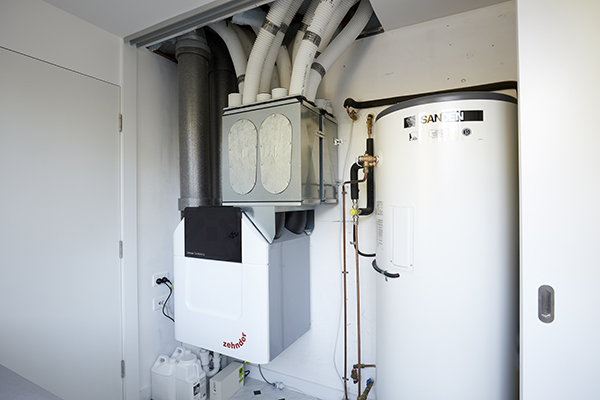Why HRV Is a Wise Investment for Modern Homeowners
Wiki Article
Checking out the Conveniences of Heat Recovery Ventilation for Energy Performance in Homes
Heat Recovery Ventilation (HRV) systems provide homeowners a sensible method to improving power performance. By redeeming warmth from outward bound air, these systems can considerably lower heating & cooling costs. In addition, they supply a constant supply of fresh air, improving indoor air quality and convenience levels. As house owners consider sustainable choices, understanding the subtleties of HRV systems ends up being progressively important. What variables should one assess prior to making such a financial investment?Understanding Heat Recovery Ventilation Systems

Exactly How HRV Enhances Indoor Air Quality

Energy Savings: The Economic Benefits of HRV
Maximizing energy effectiveness, heat recovery ventilation (HRV) systems offer significant economic benefits for property owners. By recuperating and recycling heat from exhaust air, HRVs substantially lower heating & cooling costs. This innovation can cause energy savings of approximately 30%, relying on climate and use patterns. Homeowners typically discover minimized energy bills quickly after setup, making HRVs an economically smart investment in time. In addition, several regions provide rewards or discounts for energy-efficient find out upgrades, better improving the economic allure. As power rates continue to increase, the cost-effectiveness of HRVs ends up being progressively clear. In general, the incorporation of HRV systems not just advertises power effectiveness however additionally contributes to long-term monetary savings for houses.The Environmental Impact of Heat Recovery Ventilation
A substantial ecological advantage of heat recovery ventilation (HRV) systems depends on their capability to decrease general power consumption. By recovering warm from exhaust air and moving it to inbound fresh air, HRV systems minimize the need for energy-intensive home heating and cooling down techniques. This reduction in power demand adds to reduce greenhouse gas emissions, as much less fossil gas is needed to preserve comfortable indoor temperature levels. In addition, HRV systems improve interior air quality by effectively trading stagnant air with fresh outdoor air, minimizing reliance on mechanical air conditioning systems that can harm the setting. Overall, the application of HRV systems sustains sustainable living techniques and aligns with international initiatives to battle climate adjustment by advertising website link power performance in property setups.
Choosing the Right HRV System for Your Home
How can home owners guarantee they choose the best heat recovery ventilation (HRV) system for their requirements? Initially, they should assess their home's dimension and format, as these elements affect air movement requirements. Next off, examining the system's effectiveness go right here rankings is crucial, as higher ratings show better efficiency and energy savings. House owners must also take into consideration installation and upkeep prices, comparing different brand names and versions for value. Furthermore, it's important to evaluate sound degrees, as some systems run more silently than others. Consulting with heating and cooling specialists can supply customized recommendations based on particular home conditions. Ultimately, checking out user testimonials and service warranties can help in making an informed choice, making sure that the picked HRV system properly boosts interior air top quality and energy performance.Regularly Asked Inquiries

Just how Commonly Should I Tidy or Keep My HRV System?
The frequency of cleaning or maintaining a warmth recuperation ventilation (HRV) system generally relies on usage and environmental aspects. Usually, it is advisable to do maintenance every six months to assure peak efficiency and air quality.
Can HRV Solutions Help In Reducing Humidity Levels Indoors?
HRV systems can successfully lower interior humidity degrees by trading stagnant, moist air with fresh, drier air from outdoors. HRV Heat Recovery Ventilation. This process aids keep a well balanced interior setting, improving comfort and protecting against moisture-related problems
What Is the Life-span of a Regular HRV System?
The life-span of a common heat recovery ventilation (HRV) system differs, usually lasting between 10 to 15 years. Normal maintenance can expand its performance and functional life, making sure peak efficiency throughout its usage duration.Exist Any Kind Of Noise Problems With HRV Equipments?
Sound interest in HRV systems can arise, particularly from fan operation. Many modern devices are made to decrease audio degrees, guaranteeing they run quietly while preserving efficiency, which addresses potential disturbances in living settings.Can I Mount an HRV System Myself, or Do I Required a Specialist?
The private contemplated whether to set up the heat recovery ventilation (HRV) system directly or work with a professional. Generally, while do it yourself installment is possible, competence guarantees appropriate performance and conformity with regional building ordinance, improving system efficiency.Report this wiki page